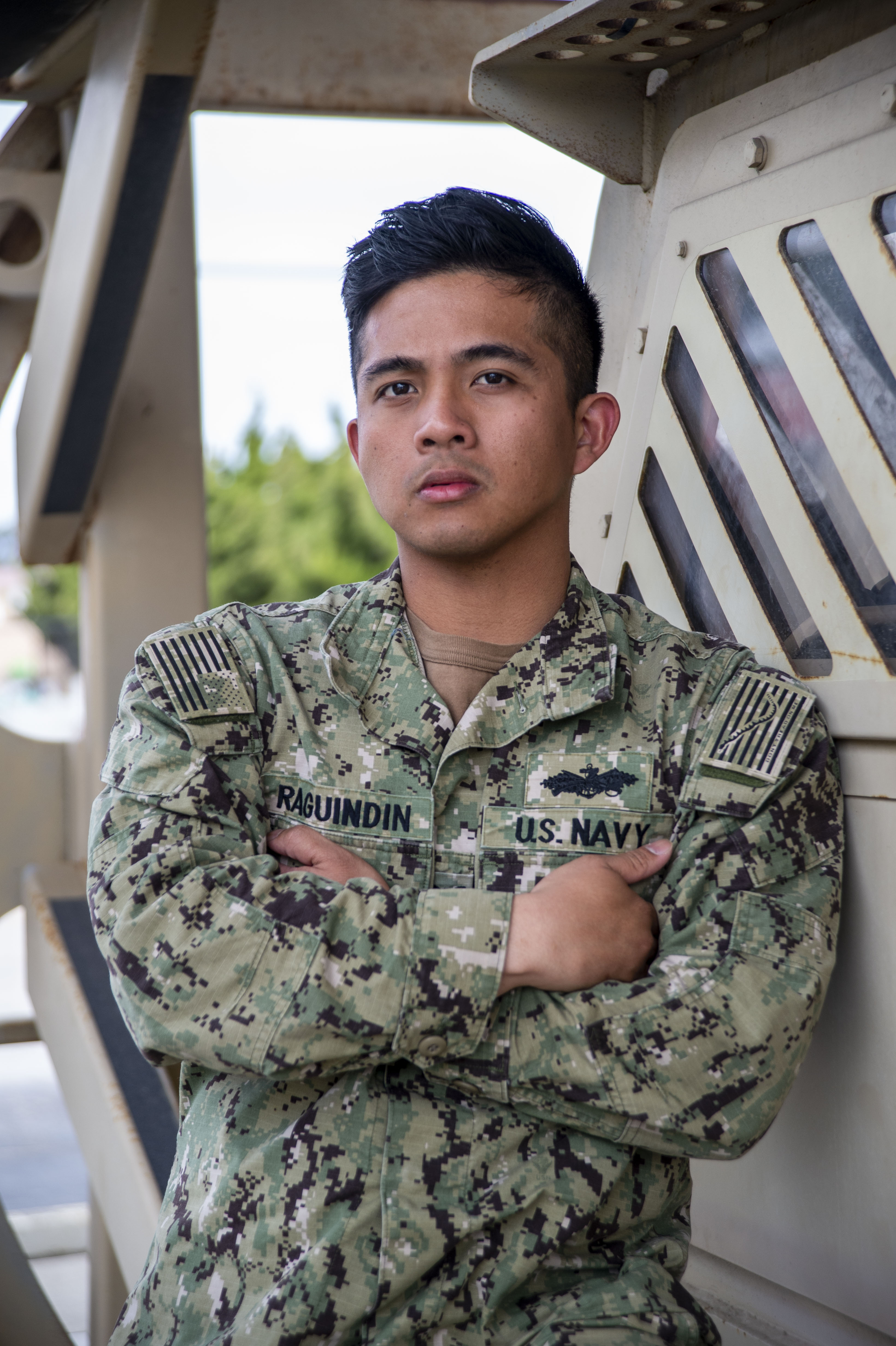
By Mass Communication Specialist 1st Class David R. Finley Jr.,
Navy Office of Community Outreac
Petty Officer 2nd Class Christian Raguindin, a native of Cerritos, California, builds and fights around the world as a member of a naval construction battalion center located in Port Hueneme, California.
Raguindin is serving as a Navy construction electrician, who is responsible for interior wiring for construction projects.
“I am a construction electrician and distribute power where it is needed and perform maintenance on equipment,” Raguindin said.
Building in austere environments can be a challenge. Fighting in harsh conditions can also be a challenge. Building in austere environments while fighting in harsh conditions takes a special kind of person with a great deal of perseverance and determination, according to officials with the U.S. Navy History and Heritage Command. These are the kinds of people being trained at Port Hueneme, to provide crucial support to Seabee units deployed around the world.
The jobs of some of the Seabees today have remained unchanged since World War II, when the Seabees paved the 10,000-mile road to victory for the allies in the Pacific and in Europe, said Lara Godbille, director of the U.S. Navy Seabee Museum.
“I enjoy the travel opportunities available to the Seabees,” said Raguindin. “I have been able to see a lot of places that I never thought possible.”
Seabees have served in all American conflicts for nearly 80 years. They have also supported humanitarian efforts using their construction skills to help communities around the world following earthquakes, hurricanes and other natural disasters.
Raguindin is a 2012 Artesia High School graduate. According to Raguindin, the values required to succeed in the Navy are similar to those found in Cerritos.
“I learned to be mature and accountable for my mistakes,” said Raguindin. “This has helped instill discipline that I have applied to my Navy career.”
Port Hueneme is the West Coast homeport of the Navy’s Seabees. It’s one of five learning sites in the Center for Seabees and Facilities Engineering domain. They train and develop sailors, soldiers, airmen, and Marines in construction trades and military skills for Department of Defense operating forces to accomplish contingency and peacetime construction, chemical, biological, and radiological operations, and humanitarian assistance missions worldwide.
Port Hueneme and the men and women who serve there play a key role in the Navy’s broader mission of protecting American interests on the world’s oceans.
According to Navy officials, maintaining maritime superiority is a vital part of a Navy that is present today and prepared for tomorrow. The impact affects Americans and their interests around the world, as more than 70 percent of the Earth is covered by water and 90 percent of all trade travels by sea.
The foundation of the Navy the nation needs includes a focus on warfighting, warfighters and the future of the fighting force.
“I am confident that we will maximize the Navy we have today while delivering the Navy that our nation will rely upon tomorrow,” said Adm. Mike Gilday, Chief of Naval Operations. “We will do so with urgency. Our fleet will be a potent, formidable force that competes around the world every day, deterring those who would challenge us while reassuring our allies and partners.”
Though there are many ways for sailors to earn distinction in their command, community and career, Raguindin is most proud of receiving a Navy and Marine Corps Achievement Medal in 2018.
“I am very proud to receive this recognition for my work,” said Raguindin. “It shows that I am one of the best in my battalion.”
As a member of the U.S. Navy, Raguindin, as well as other sailors, know they are a part of a service tradition providing unforgettable experiences through leadership development, world affairs and humanitarian assistance. Their efforts will have a lasting effect around the globe and for generations of sailors who will follow.
“Being a Seabee means being flexible,” said Raguindin. “We are required to work construction while at the same time supporting the warfighting effort.”
